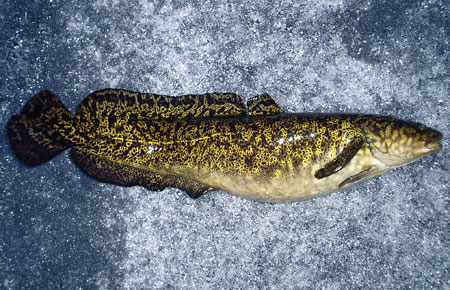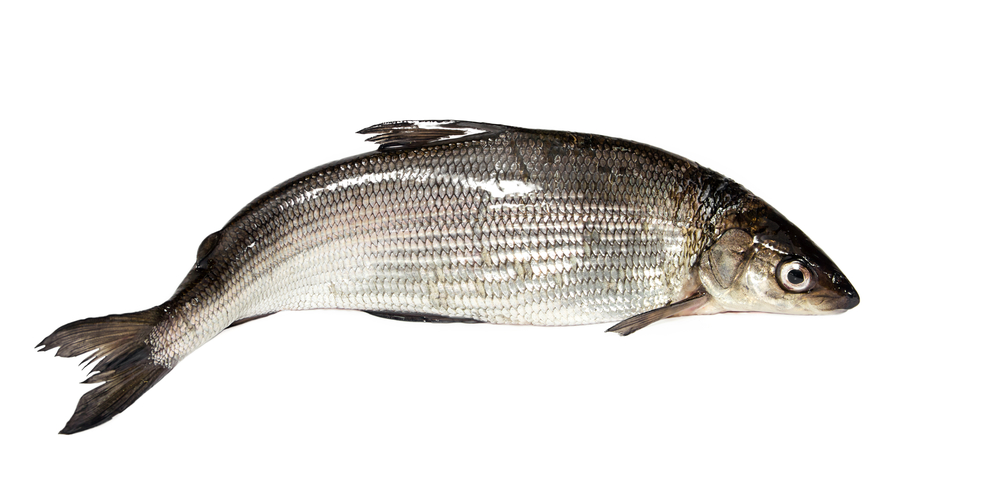How Lake Fish Are Coping With Pollution
Author Dan Egan tells the story of one of the last Great Lakes fisherman who witnesses the adaptation of a fish to Lake Michigan’s polluted ecosystem.
The following is an excerpt from The Death and Life of the Great Lakes, by Dan Egan. This book is the winter 2020 SciFri Book Club selection! Read along with us!
Ken Koyen wasn’t a particularly big teenager, he wasn’t a particularly tough one, and he wasn’t particularly keen to carry on the backbreaking Great Lakes commercial fishing business that had sustained his family since the 1800s. But Ken’s dad had other plans, especially after he asked one day to see his growing boy’s hands.
“They’re big enough,” his dad said gruffly. “You’ll do just fine.”
That was almost a half century ago. Today Ken Koyen is the last full-time commercial fisherman on Wisconsin’s Washington Island, which sits at the edge of a violent patch of northern Lake Michigan, known as Death’s Door for the countless boats its churning currents have sunk over the past few centuries. There was a time when the island was a base for some 50 commercial fishing boats, many manned by descendants of Icelandic immigrants who found the rugged chunk of limestone where the frigid waters of Lake Michigan collide with the warmer waters of Green Bay a suitable surrogate for their North Atlantic homeland.

By 2003 Koyen was the only full-time commercial fisherman left, and the stocks that had sustained his father, and his father, and his father, and his father—lake trout, perch, chubs and whitefish—were struggling or all but gone. Koyen was left to chase what many once regarded as a trash fish, the lowly burbot—a bottom dweller that the oldtimers considered nothing but a nuisance in their nets. To eat one of these fish back when Washington Island was famous for its fishing fleet was to hit bottom, a “disgrace,” as one 91-year-old life-long island resident once told me.
But by 2003, the islanders had realized the freshwater cousin to ocean cod was better than nothing. In fact it was tasty enough. Delicious even. It had to be. The only other native species that drifted into Koyen’s nets, which some days stretched two miles across the lake bottom, were whitefish, and they were starving, because their favored food, a quarter-inch long, shrimp-like organism that once blanketed the lake bottom, had vanished with the arrival of the invasive quagga and zebra mussels in the late 1980s and early 1990s. In the years before the mussel invasion, a seven-year-old whitefish had an average weight of nearly five pounds. By 2003 it had crashed to barely a pound. This left the famished whitefish, built to root about the lake bottom and grub what they could with their toothless mouths, with little but the sharp-shelled mussels to eat. Koyen remembers the changeover in diet as a grim one. Whitefish don’t have the jaws to crack open mussel shells and suck out the meat, so they swallowed them whole and left the hard work to their stomachs, which weren’t, at least at first, up to the task. Using the colorful language of a self-taught biologist, Koyen explained that the typical whitefish has an anus about the size of a “swizzle stick.” But the fish excrement, a paste of crushed mussel shell thick as unset concrete, stretched the whitefish’s underside orifice to the diameter of his pinky. “It actually looks like hemorrhoids,” he told me. “It actually pushes part of their intestine out.”
[These microbes thrive in this Antarctic lake buried beneath ice.]

By 2005 Koyen was thinking his fishing business was similarly going down the tubes. “Honestly, I thought whitefish were done,” he said, “and I thought I was done.”
Then nature stepped in. Koyen said he began to notice the stomach muscle whitefish use to grind mussel shells getting bigger year after year, to the point that today he says you can see a rigid rib on the fish belly where none used to exist, and he now catches a healthy whitefish with stomachs full of mussel paste. But these native fish have done more than just adapt to a diet of mussels.
Back in the early 1980s, Koyen was fishing with his dad when the two hauled from the depths of the lake something neither man had ever encountered—a whitefish with an alewife hanging out of its mouth. What made this so strange is that whitefish are not a fish-eating fish. They don’t even have teeth. “Look at that! Look at that!” Koyen’s dad hollered over the rumble of the boat engine. His dad actually stopped lifting the net to get a closer look and ponder the oddity. For an oldtimer who had spent his life lifting untold thousands of fish from the depths of the lake, seeing a whitefish going after another fish was about as bizarre as stumbling upon a man gnawing on a log.

Today all Koyen sees is whitefish bellies loaded with mussels and fish, particularly round gobies, a bottom-dwelling invader that might just be the future of the Great Lakes, and for one simple reason— gobies have molar-like teeth that allow them to crunch mussel shells. This means the bug-eyed fish not much larger than your thumb unlock what is otherwise a nutritional dead end for other native fish species that still cannot digest the shell—provided those native fish can, in turn, eat gobies. Koyen once cut open a whitefish that had 37 gobies in its belly and said that it is now common to hoist nets full of whitefish with their jaws ripped open from swallowing the fish whole. “They’re fat,” Koyen said of the improving condition of the whitefish. “They’re round.”
Koyen thinks he is watching evolution at work, and he isn’t the only one. I talked to commercial fisherman Charlie Henriksen one sunny June morning just after he hauled in 1,600 pounds of whitefish about 30 miles south of where Koyen fishes. Henriksen said he, too, is “absolutely” convinced the species is evolving before his eyes to cope with the changes in the lake. “What we’re seeing with the whitefish, well, they might be the most adaptable fish in nature,” he told me. “They’re more adaptable than some people I know.”
Henriksen said the species switchover in diet from the little shrimp to mussels, gobies and any other fish they can get their mouths around means he now catches whitefish in such strange places that he has essentially had to learn to fish for them all over again, as if they were a different species altogether. He said he could not imagine describing the changes to the long-gone fishermen who taught him the trade.
“If I told them where I was fishing and what I was catching, they’d shake their heads and say: ‘No way Charlie. Stop the bullshitting.’ I mean, that’s how much it’s changed.”
Biologists who manage the Lake Michigan fishery say whitefish are flourishing to the point that they are expanding their range into tributaries that feed the lake, and they now swim so thick in the open waters that an entirely new rod-and-reel recreational fishery has emerged.
“We’re lucky when you consider all the crazy stuff going on, that the fish can still thrive,” said Scott Hansen, a biologist with the Wisconsin Department of Natural Resources.
Reprinted from The Death and Life of the Great Lakes by Dan Egan. Copyright © 2017 by Dan Egan. With permission of the publisher, W. W. Norton & Company, Inc. All rights reserved.
Dan Egan is the author of The Devil’s Element, and Journalist in Residence in the School of Freshwater Sciences at the University of Wisconsin-Milwaukee in Milwaukee, Wisconsin.